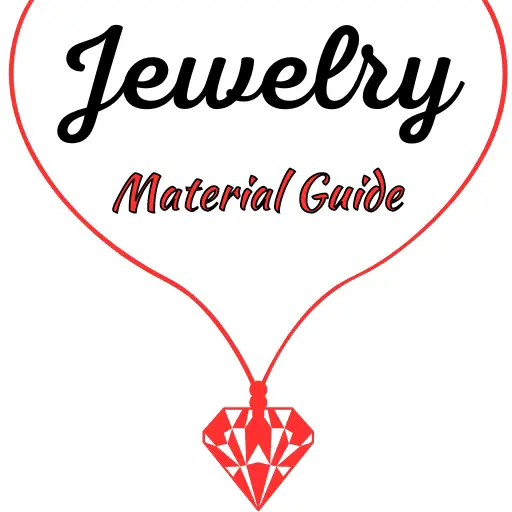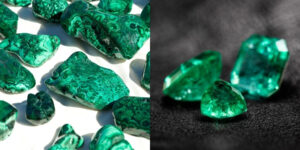Rubies are possibly the most famous red gemstones in existence, and as time went on they’ve had many contenders. One of these is rubellite, both in looks and in name. The two are easy to confuse, especially if you’re not very familiar with gemstones in general.
Today we’re taking a look at ruby vs rubellite, how they’re different, and whether you can use one in place of the other.

Ruby vs rubellite
Rubies are far more expensive than rubellite, and they are a harder gemstone so they will easily withstand daily wear and tear. Both rubellite and ruby are red gems, but rubellite has a slight pink hue to it which ruby does not usually have. When trying to source a rubellite it will be more difficult, as they are rarer on the market than a ruby.
Using a rubellite in place of a ruby is possible, though the higher clarity of a rubellite will give it away. A ruby of the same color as a rubellite is usually very included and looks cloudy.
What is ruby ?
Ruby is a type of corundum, in the same family as sapphires. In fact it’s only red corundum with red flashes that can be called ruby. Anything else is a sapphire, regardless of color (including pink sapphires). These are some of the oldest known gemstones, and they have always been prized for their intense red color.
What is rubellite ?
Rubellite is a type of tourmaline, named so after the Latin “rubellus” meaning reddish or red colored. Rubellite shares many similarities with pink tourmaline, but it flashes only red and a deep red at that, while pink tourmaline flashes pink.
Now let’s take a look at rubellite and ruby and see which would be better for your situation.
1. Rubies are harder gems than rubellite
Whenever you think of jewelry you’re likely thinking of something you intend to wear for a long time (decades), in which case the hardness of the gemstone matters a lot.
Rubies are far stronger and harder than rubellite, which makes them excellent for daily wear and they will survive log enough to be passed down several generations ! This is because a ruby scores a 9 on the Mohs scale of hardness, while rubellite scores a 7.5 on the same scale. For comparison a diamond scores a perfect 10 out of 10.
So while you could wear both rubellite and ruby on a ring, expect scratches and chipping to appear on your rubellite after a few years. Rubellite needs more TLC than ruby, so it’s worth thinking if you’re up for the care a rubellite needs.
Read also: Opal VS Diamond
2. Rubellite is rarer than ruby, harder to find
Rubellite is a type of tourmaline, which is not a rare gem family by any means. But rubellite is the rarest tourmaline you could ever ask for, possibly rarer than watermelon tourmaline (pink-green). So when you’re out and about, looking for a rubellite to mount in jewelry, you will have a harder time that if you went looking for a ruby.
This is because the demand for rubellite is far lower than the demand for ruby, simply due to it being less popular.
meanwhile, if you were to look for rubies, you would find plenty of them. But most of them will be lighter shades, as the deep red ones are not very easy to find and are amazingly expensive. Still, it’s far easier to find a decent quality ruby than a rubellite.
3. Rubies are far more expensive than rubellite
Speaking of how easy it is to find these gems, let’s talk prices as well. Rubies are far, far more expensive than even the best rubellite. In fact rubies tend to be more expensive than sapphires, by almost double.
A perfect ruby, with great color saturation and eye-clean will usually start at about $7,000 per carat, and can go all the way to $80,000 ! The deeper the red the higher the price, and an eye-clean gem is always going to fetch a very high price.
Now, this is the truth only for natural, untreated rubies. Like sapphires, rubies are heat-treated to get a better color, and are sometimes filled resin to reduce their factures. The result is a beautiful ruby but a far lower price. The price range for a treated ruby is $500 to 30,000 with deeper, brighter colors fetching the highest price. If you look at it, it’s still a very high price, but it’s about half the price of a natural ruby and the full price for an excellent natural sapphire.
Now let’s take a look at rubellite. A perfect eye-clean rubellite, with a deep red color with a slight pink hue, usually sells for about $1300 per carat. This is the price for a natural, untreated rubellite.
4. Rubellite is more pink/violet, ruby is a deeper red
There is a color difference between ruby and rubellite, despite both being red gems. Rubies have a deep red color, and they have red flashes but still retain their red when held up to the light. The only time you will see rubies with a pink color is when they’re heavily included (those look like whitish clouds) and even then it’s not hot pink, it’s a very light red.
Rubellites have a red body with a significant pink hue to them. They can flash pink, but should still retain a red body when held up to the light. Some rubellites have a slight purplish tint instead of pink.
What’s a key way to tell a poorly colored ruby from a rubellite ? Poorly colored rubies, the ones that aren’t deep red, will almost always have a lot of inclusions in them. The exact same color rubellite will almost always be eye-clean. It’s the inclusions that dull the color in a ruby most of the time.
Can you use rubellite in place of ruby ?
You may use rubellite in place of ruby if you’re in a pinch, but there is a bit of a color difference which can be noticeable up close. The rubellite will tend to appear a little more pink/purple than a ruby, so you shouldn’t expect a 100% color match. Still, it’s a swap that can be done as not all rubies achieve that deep red color.
If you’re looking for a better substitute for ruby you should try red spinel. This has been confused with ruby for centuries, and it has a deep red color much like ruby. It’s a bit more expensive than rubellite but is a better color match as it has the same deep red as a ruby more often than a rubellite does.
The usual price for an eye-clean, vivid red spinel is around $1,800 per carat. Also, spinel is a bit harder than rubellite as it has a Mohs rating of 8 out of 10. This makes it more scratch-resistant than rubellite, and it will handle daily wear and tear a bit better.

I’m the main author for jewelrymaterialguide.com. I started this site after we did tons of research before our wedding and noticed that there is information about rings, jewelry, and so on that is really hard to find on the internet.






